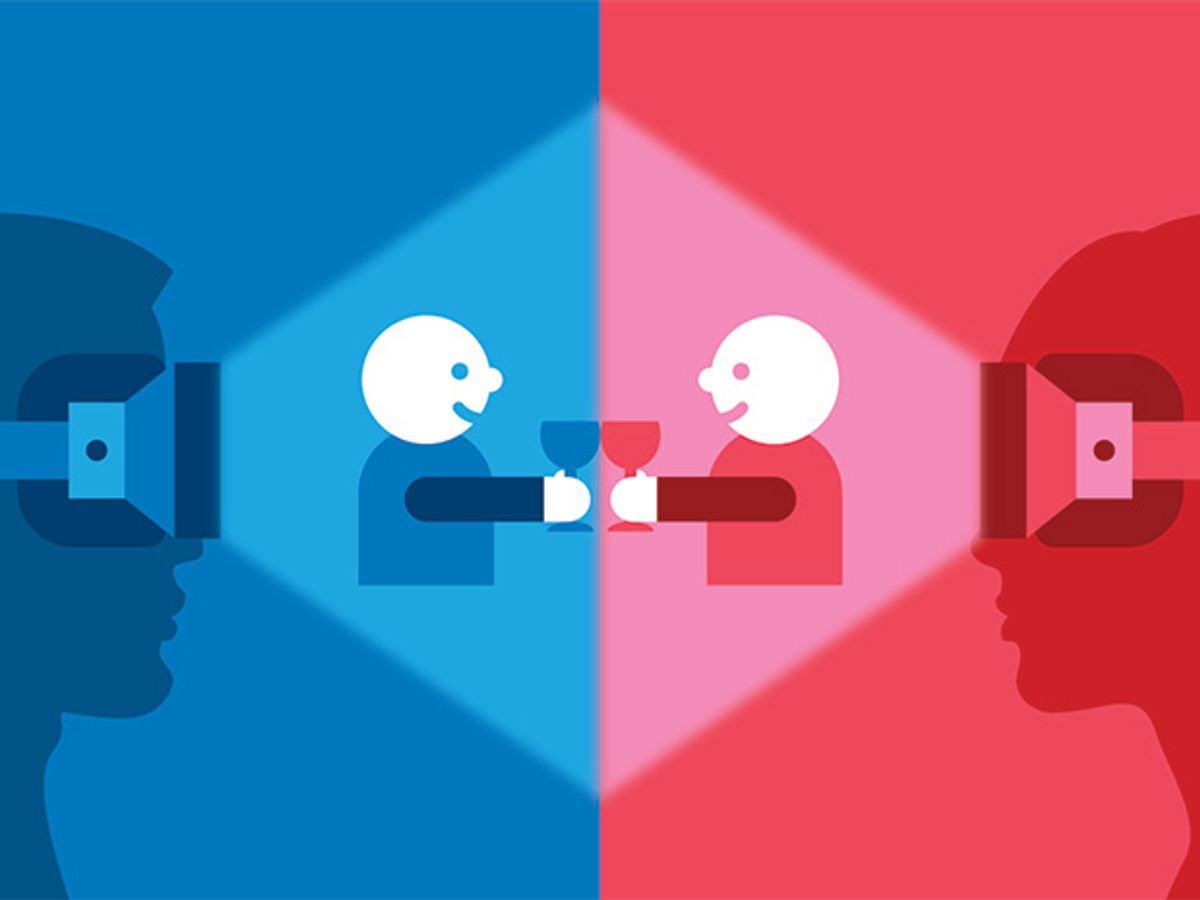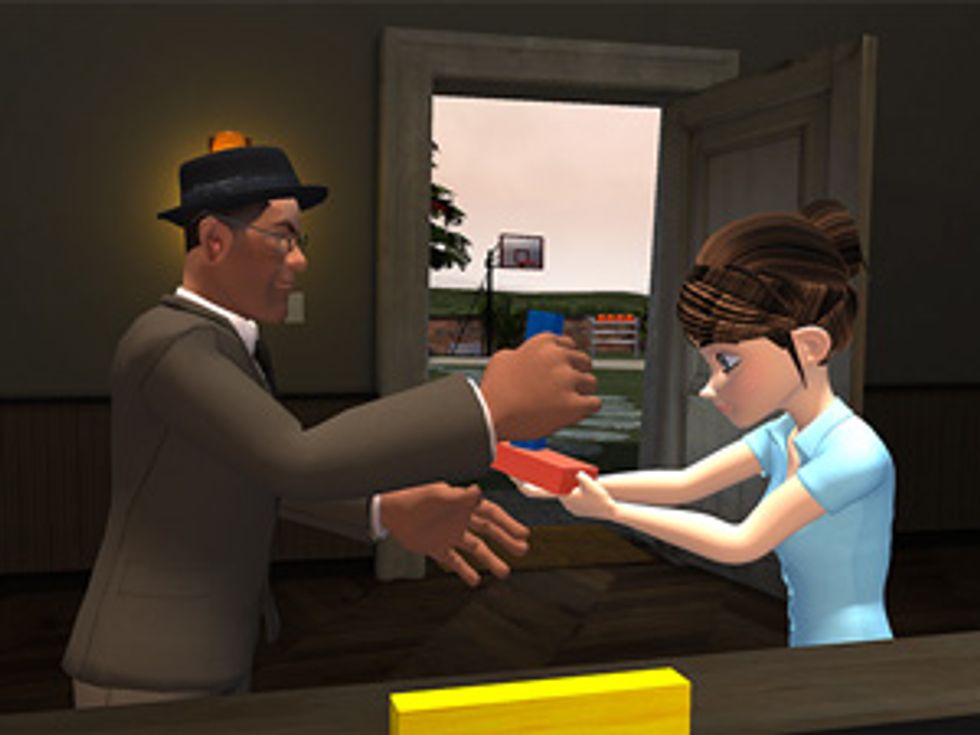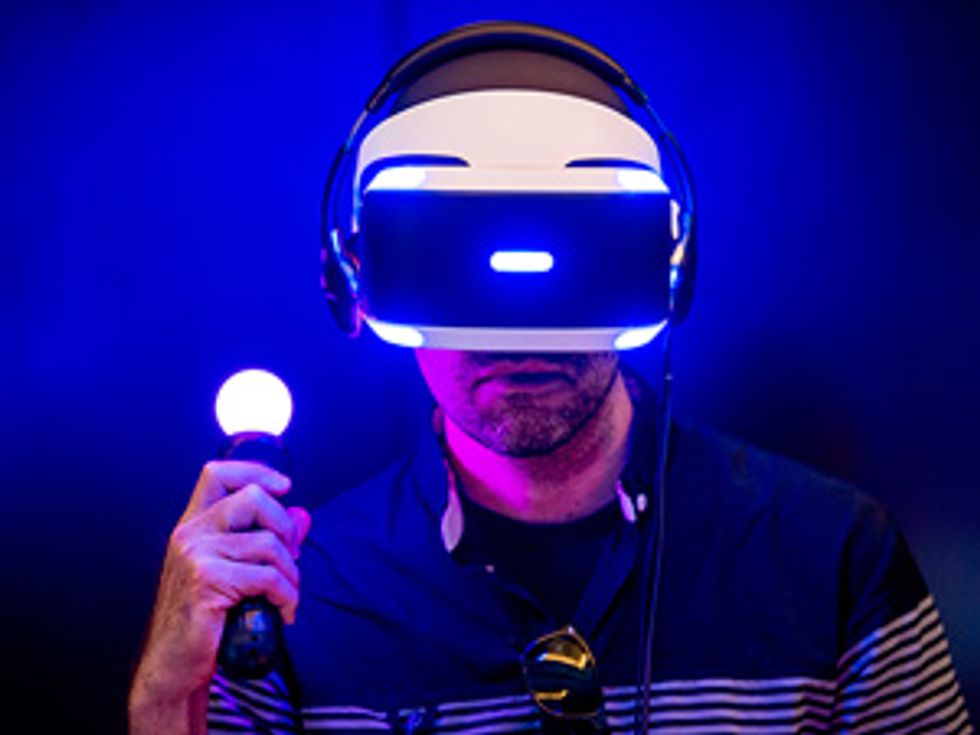Virtual Reality App: Takes Over Your Social Life
Meeting people, not playing games, will make Virtual Reality popular

The door to mass-market virtual reality is about to burst open. Engineers have solved most of the hardware challenges, driven down the price to just a few hundred dollars, done extensive testing, and gotten software tools into the hands of creative developers. Store shelves will soon be teeming with head-mounted displays and hand controllers that can paint dazzling virtual worlds. And then the first wave of VR immigrants will colonize them.
You might think the first adopters will be gamers, but you’d be wrong. The killer app for virtual reality will more likely be something to enhance ordinary social experiences—conversations with your loved ones, a business meeting, a college class—but carried out with a far richer connection than you could establish by texting or talking or Skyping.
Matter of Fact
People who sawed down a virtual tree at Stanford’s Virtual Human Interaction Lab later used 20 percent fewer paper napkins.
Jeremy Bailenson, founder of Stanford’s Virtual Human Interaction Lab, and his coauthors predicted in these pages in 2011 that such “social VR” was on the horizon. “Current social networking and other online sites,” they wrote, “are just precursors of what we’ll see when social networking encompasses immersive virtual-reality technology. When people interact with others for substantial periods of time, much as they do now on Facebook but with fully tracked and rendered avatars, entirely new forms of social interaction will emerge.” With the variety of head-mounted displays—including the Oculus Rift, Sony’s PlayStation VR, and the HTC Vive—going on sale later this year, that future is now here.
At its most basic, social virtual reality allows two geographically separated people, in the form of fairly realistic avatars, to communicate as if they were face-to-face. They can make eye contact and can manipulate virtual objects that they both can see. It’s somewhat like telepresence, but VR denizens won’t have to worry about appearing at a business meeting in pajamas. (Their avatars will, no doubt, be impeccably dressed.) And they’ll be a lot less likely than the users of telepresence systems to struggle with frozen images or interrupted calls, because their VR gear needs to send instructions only about how to move the avatars, not the entire image.

Of course, this year’s VR technology won’t be perfect. Headsets won’t be able to track exactly where your eyes are pointed; for example, the software will assume you’re looking at the person you are talking to. And they aren’t yet reading detailed facial expressions, in no small part because the gear blocks half the face, although ways around that obstacle are being developed; the gadgets do know when you turn your head or nod.
For the more powerful systems, you’ll be tethered to your computer with cables, because the amount of data needed to transmit high-
resolution video at high frame rates overwhelms today’s standard wireless technology. And the perfect user interface—the VR equivalent of the mouse—has yet to be developed. Still, the input devices coming out this year will be good enough to get social VR off the ground.
As a result, lots of folks are working to make social VR happen. Linden Lab, the San Francisco company behind Second Life, a screen-based simulation with a million active users today, is getting ready to roll out a new platform. Linden’s Project Sansar is a host for user-created virtual experiences and tools to build them that will work with VR headsets, standard computer monitors, and mobile devices. The Sansar world will function much like Second Life, with people leasing space for their virtual creations, which will be rendered in 3-D and at a high frame rate. The French company Beloola is building a similar virtual world designed for social networking.
VR Will Grow 200-Fold From 2014 to 2020
Worldwide revenue for VR hardware and software is projected to increase from US $108.8 million to $21.8 billion.
High Fidelity, the latest startup from Second Life’s creator, Philip Rosedale, has a different approach: Instead of building a virtual world, the company is developing open-source software tools and offering a registry, identity verification, and other services for the virtual worlds others build. Still other companies are working on software for sharing experiences virtually: for example, watching movies or TV shows, or recording snippets of your life in 360 degrees and sharing them with friends.
To be successful, these efforts will require a critical mass. To build that, companies are counting first on selling to people who have an immediate need for social VR, say, for cutting down on business travel or improving educational experiences.
“If you could put on a VR headset and walk around an Italian street where everyone is talking Italian and interact with other students and teachers in Italian, that is real immersion, and I can do that for you cheap,” says Rosedale.
Attractive as such possibilities seem, it will take time for social VR to spread as widely as some other social media. “We’re not going to have millions of people in VR [in 2016],” Rosedale says. “It’ll be hundreds of thousands. But the things these early adopters will be able to do—to be in a room with someone they have never met before and to communicate normally—will have such high value, they will quickly pull more people into using these things.” And, as anyone who has found themselves checking Facebook more than they would like to admit knows, once you get pulled into an online world, you might find it hard to leave.
This article originally appeared in print as “Virtual Reality Goes Social.”
